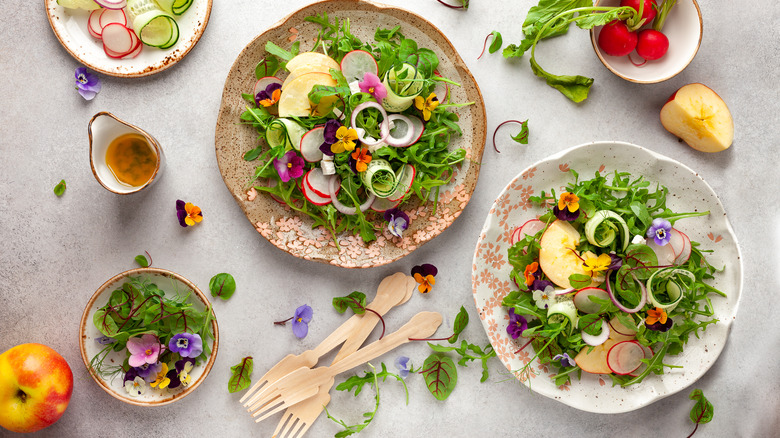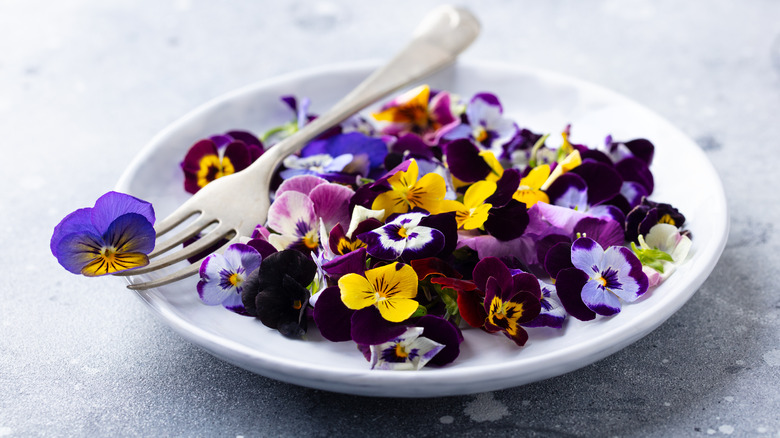How To Track Down Edible Flowers For Brighter Spring Salads
This spring, step up your salads by adding tiny, delicate pops of color. Yes, we're talking edible flowers. According to Pinterest, wildflowers are expected to be one of the biggest culinary trends of the year. While these plant parts have been used in cookery since ancient times, their current popularity may leave people looking for the best ways to incorporate flowers into their meals.
For a new twist on your favorite salad, try throwing some edible flowers on as a garnish. Their bright colors create a dramatic effect, but they also provide fragrance, flavor, and even health benefits. If you aren't growing edible flowers yourself, you may have some trouble tracking them down. Those that have been dried are the easiest to find (both online and in stores) and can be kept for a long time. For fresh ones, you might need to do a little digging (pun intended).
Finding edible flowers may be difficult in the winter but, they're more readily available during the rest of the year. Many supermarkets and specialty grocery stores sell some in the produce section. Whole Foods, for example, stocks small packages of assorted flowers near the herbs. They're also becoming more commonly available at farmers markets. Your local florist and bakeries that consistently use fresh flowers (think wedding cake decorators) may have the inside scoop on where to find edible flower suppliers. If all else fails, you can fall back on your trusty Plan B and order them online.
Here's how you can pair your edible flowers
You've probably seen many flowers used in drinks or food, such as rose, lavender, hibiscus, chamomile, and violets. But what about salads? Each flower has its own flavor profile, so you'll want to consider that when choosing which greens to use. For example, nasturtiums have a spicy flavor, while dandelions are sweet and borage has a bit of a cucumber flavor. Some people disregard the flavor completely and only include flowers for their bright colors. Use their hues to complement or contrast your greens, such as pairing purple, red, and blue pansies with a salad base of purple kale.
The most important thing is to make sure that if you buy flowers, they are specifically labeled for eating. Fresh options will be colorful and perky, so any wilting or mold is a bad sign. Always double-check their appearance before putting them in your food. Not all flowers are edible, so don't just eat any ol' flower from the grocery store or side of the road. If you eat the wrong flower, you could end up sick or, in the worst-case scenario, dead (via Kremp Florist). There's also a chance that the flowers were exposed to harsh chemicals or pesticides, which is another reason to only purchase from reputable sources. If you choose to pick your own, be sure to familiarize yourself with the do's and don'ts of flower foraging in the wild before getting started.

